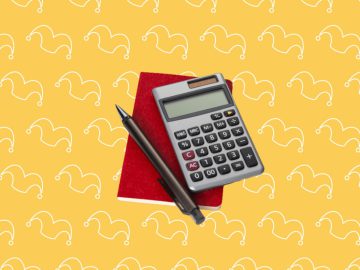kupicoo / iStock.com
Many retirees live on a fixed income, and it can sometimes be challenging to make ends meet. Life is expensive, and it doesn’t get any cheaper as you get older. However, if you bought a home years ago and you still live in it today, you have options if you need extra cash.
Find Out: Cutting Expenses for Retirement? Here’s the No. 1 Thing To Get Rid of First
Read Next: 3 Things You Must Do When Your Retirement Savings Reach $50,000
Accessing your home equity can give you more cash flow to make ends meet and allow you to remain financially independent. There’s more than one way to do it, but first, here’s how a reverse mortgage works.
What Is a Reverse Mortgage?
A reverse mortgage is a loan for homeowners aged 62 and older that turns their home equity into cash.
The loan first pays off your mortgage. Then, the rest of the money can be used however you want. While you’ll need to continue paying your homeowners insurance and property taxes, you won’t be responsible for making another mortgage payment until you pass away, move or sell the home.
However, a reverse mortgage comes with some cons, like high fees. If you don’t think a reverse mortgage is right for you, there are some solid alternatives. Here are four ways that retirees can access their home’s equity without a reverse mortgage, according to Unison and Rocket Mortgage.
Be Aware: 5 Reasons Retirees Regret Selling Their Homes in Retirement
Sell and Downsize
Instead of taking out a reverse mortgage, you can reduce your monthly expenses and access home equity by selling and downsizing your family home. If you sell your home and relocate to a less expensive home or area, you can potentially pay for your new home in full without a mortgage and put the remaining proceeds toward other expenses or your savings.
Pros
Cons
Rent Out Your Unused Space
Consider renting out your unused or vacant space rather than taking out a reverse mortgage. Maybe you don’t use your basement, or perhaps you have spare rooms that you don’t need. Renting out your space to short or long-term tenants can provide vital cash flow to help cover retirement expenses.
Pros
Cons
Refinance Your Current Mortgage
Refinancing your current mortgage is a smart way to get a lower interest rate and/or change your loan terms. With interest rates dropping, refinancing your mortgage now could help you get a lower rate. If you refinance to shorten your loan term, this will likely mean higher monthly payments, but you’ll owe less interest over the life of your mortgage.
Pros
Cons
Take Out a Home Equity Line of Credit (HELOC)
A HELOC is a second mortgage that provides you access to your home’s equity through a line of credit. To qualify for a HELOC loan you’ll need to be at least 18 years old, have at least a 15%-20% stake in your home, have good credit and have a stable income to qualify.
It functions similarly to a reverse mortgage line of credit, since you won’t receive a lump sum of cash, but rather you can continuously borrow from the loan up to a set limit. However, a HELOC loan carries risk. You’re borrowing against the equity in your home, and you must pay it all back by the end of the term. Otherwise, you’ll be putting your home in jeopardy.
HELOCs are useful for people looking to consolidate their debts, who need a large sum of money for another expense, or who need capital to make a significant home improvement.
Pros
Cons
-
You’ll have to pay back the equity you borrow, plus interest.
-
You could lose your home if you can’t pay off the loan by the end of the term.
More From GOBankingRates
This article originally appeared on GOBankingRates.com: 4 Ways Retirees Can Access Their Home’s Equity Without a Reverse Mortgage



